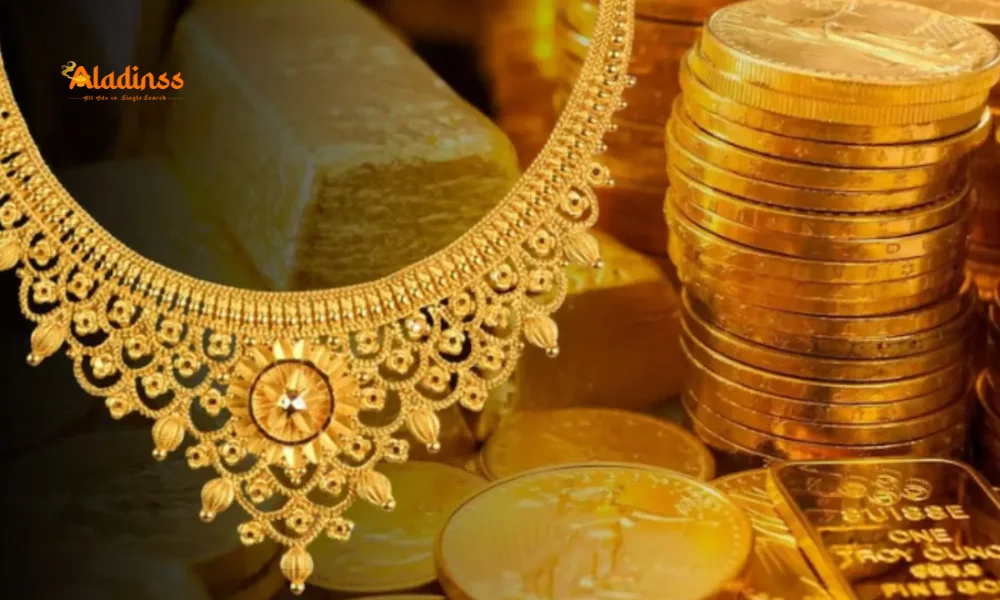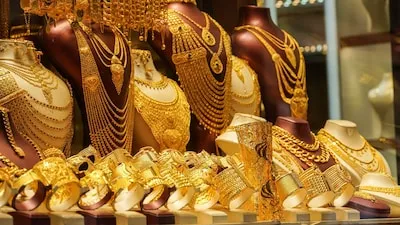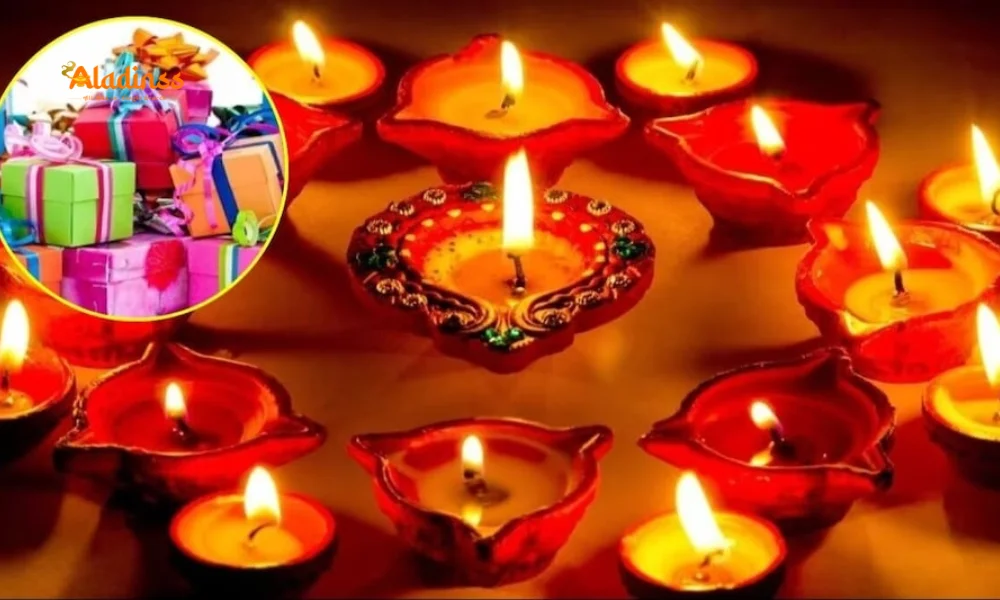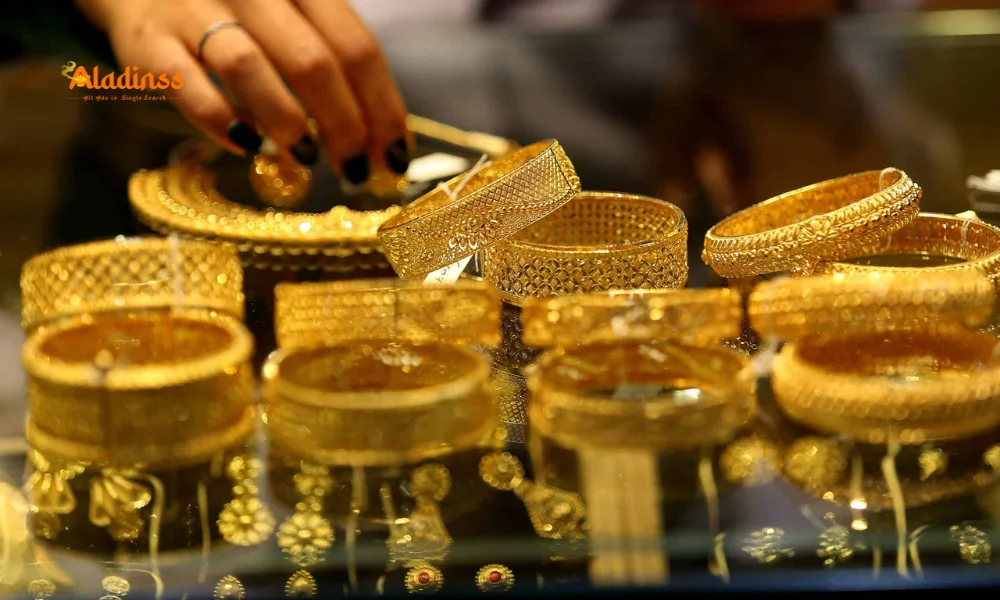One Gram Gold Jewelry: Is It Really Gold? The Surprising Truth Revealed

One Gram Gold Jewelry: Is It Really Gold? The Surprising Truth Revealed
In today’s market, where gold prices are soaring to unprecedented levels, many people are turning to affordable alternatives that mimic the luxurious appearance of gold. One such popular option is “one gram gold jewelry,” which has captured the attention of budget-conscious buyers, particularly in India. But does this jewelry actually contain gold? The answer might surprise you. Despite its name, one gram gold jewelry is not made of real gold but is instead crafted from base metals like copper or brass, coated with a thin layer of gold through electroplating or gold foil. This article delves into the truth behind one gram gold jewelry, its appeal, limitations, and what buyers need to know before making a purchase.
The Allure of Gold in India
Gold holds a special place in Indian culture, symbolizing wealth, prosperity, and auspiciousness. From weddings to festivals like Diwali and Akshaya Tritiya, gold jewelry is a staple in celebrations and gift-giving traditions. Women, in particular, have a deep affinity for gold, often viewing it as a timeless investment and a mark of elegance. However, with the price of 22-karat gold reaching around ₹10,000 per gram as of September 2025, purchasing authentic gold jewelry has become a significant financial burden for the middle class. The rising cost of silver, another popular metal, has further compounded the challenge, pushing consumers to seek cost-effective alternatives that replicate the look of gold without the hefty price tag.
This is where one gram gold jewelry comes into play. Marketed as an affordable option, this jewelry has gained popularity for its ability to mimic the aesthetic of real gold at a fraction of the cost. Available online and in local markets for prices ranging from ₹80 to ₹500, one gram gold jewelry offers an attractive solution for those who want to adorn themselves with gold-like pieces for special occasions without breaking the bank.

What Is One Gram Gold Jewelry?
Despite its misleading name, one gram gold jewelry does not contain actual gold in any significant quantity. Instead, it is made from base metals such as copper, brass, or other alloys, which are then coated with a thin layer of gold through techniques like electroplating or gold foil application. Electroplating involves depositing a thin layer of gold onto the surface of the metal using an electric current, while gold foil involves applying a thin sheet of gold-like material. The term “one gram gold” is primarily a marketing tactic designed to attract buyers by suggesting a connection to real gold, but in reality, the gold content, if any, is negligible.
The low cost of one gram gold jewelry—ranging from ₹80 to ₹500 compared to ₹10,000 for a single gram of 22-karat gold—makes it an appealing choice for budget-conscious consumers. However, this tremblor buyers often mistake it for authentic gold jewelry due to its shiny, gold-like appearance. This misunderstanding can lead to disappointment when they realize the jewelry has no resale value and is not a long-term investment.
Why One Gram Gold Jewelry Is Popular
The skyrocketing price of gold has made one gram gold jewelry a go-to option for those who want to wear gold-like accessories for weddings, festivals, and other special occasions. Its affordability allows individuals to own multiple pieces without significant financial strain. Additionally, because of its low cost, there is less worry about loss or theft compared to real gold jewelry. For instance, a pair of one gram gold earrings priced at ₹200 is far less stressful to replace than a pair of 22-karat gold earrings costing thousands of rupees.
This jewelry is particularly popular among women who want to keep up with fashion trends without investing in expensive pieces. It is designed to look nearly identical to real gold, making it suitable for events where appearance matters but durability is not a primary concern. However, buyers must be aware that the gold-like coating can wear off over time, especially with daily use, revealing the base metal underneath.
Limitations of One Gram Gold Jewelry
While one gram gold jewelry offers affordability and aesthetic appeal, it comes with significant limitations. The most notable drawback is its lack of resale value. Unlike real gold, which retains value and can be sold or pawned, one gram gold jewelry is essentially costume jewelry with no market value once purchased. If taken to a jeweler for resale, it is unlikely to fetch any significant amount, as the gold content is minimal or nonexistent.
Additionally, one gram gold jewelry is not suitable for daily wear. The electroplated or foil coating is prone to wearing off with regular use, exposure to water, or contact with chemicals like perfumes and lotions. This can cause the jewelry to lose its gold-like appearance, exposing the base metal and diminishing its aesthetic value. For this reason, it is best reserved for occasional use during special events rather than as everyday accessories.
Consumer Awareness: What to Know Before Buying
Given the misleading name, consumers must exercise caution when purchasing one gram gold jewelry. It is essential to ask the shopkeeper or seller about the materials used and clarify whether the item contains any actual gold. Reputable sellers will disclose that the jewelry is made of base metals with a gold-like coating, but less scrupulous vendors may not be as transparent. Buyers should also check for certifications or labels indicating the materials used to avoid being misled.
When shopping online, where one gram gold jewelry is widely available, consumers should read product descriptions carefully and check customer reviews for insights into the quality and durability of the items. If the price seems too good to be true—such as a necklace priced at ₹100—it is likely not real gold. Educating oneself about the differences between authentic gold and gold-plated jewelry can prevent disappointment and ensure informed purchasing decisions.
The Role of One Gram Gold in Today’s Market
The soaring price of gold, which has reached record highs in 2025, has made one gram gold jewelry a viable alternative for many. It caters to the middle class, who may find authentic gold jewelry unaffordable but still wish to participate in cultural traditions involving gold-like accessories. The jewelry’s low cost and gold-like appearance make it ideal for short-term use during festivals, weddings, or other celebrations where looking elegant is a priority.
However, the term “one gram gold” is a marketing strategy that can confuse buyers. The name suggests a connection to real gold, but the reality is that these pieces are primarily decorative. Consumers should view one gram gold jewelry as a fashion accessory rather than an investment, understanding that its value lies in its appearance rather than its material composition.
Cultural and Economic Context
In India, gold is more than just a precious metal; it is a cultural cornerstone. It is associated with wealth, status, and good fortune, making it a popular choice for significant life events. However, the escalating prices of gold and silver have put pressure on middle-class families, who often save for years to purchase gold jewelry. One gram gold jewelry fills this gap by offering an affordable way to maintain cultural traditions without the financial strain of buying real gold.
The rise of e-commerce platforms has further boosted the popularity of one gram gold jewelry, with countless online stores offering a wide range of designs at competitive prices. These platforms cater to the demand for budget-friendly, gold-like accessories, but they also increase the risk of misrepresentation. Consumers must remain vigilant to avoid purchasing items under false pretenses, ensuring they understand the product’s true nature before buying.
Comment / Reply From
No comments yet. Be the first to comment!








